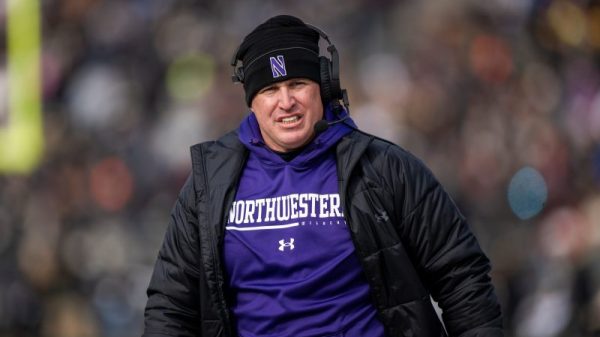There is almost no chance that Vivek Ramaswamy will be the Republican nominee for president in 2024, much less be elected to that office in November of next year. And even if this odds-of-being-hit-by-an-asteroid-level event were to occur, there’s no real chance that a policy he proposed in an interview with Politico would at any point become the law of the land.
But that he proposed it at all is significant — not because it bolsters the chance Ramaswamy will become president but, instead, because it captures a significant, underrecognized aspect of Republican politics in the year 2023.
The proposal is this, as captured by Politico’s Natalie Allison:
Ramaswamy was quick to distance this limitation from prior efforts to restrict the vote; he told Allison that he opposed the Constitution’s original requirement for voting, land ownership, and supported the expansion of the franchise to women and Black Americans. But, he said, “there needs to be some civic experience you need to have gone through in order to actually vote.”
It doesn’t really matter whether Ramaswamy actually believes that this “civic experience” is necessary. The implication is what’s important, and telling. The argument is predicated on the idea that young people simply aren’t wise enough to be trusted to vote. And, of course, Republicans like Ramaswamy would be quick to point out their evidence for that assertion: Young people vote very heavily Democratic.
Reducing the number of voters under 25 would have an obvious effect on political outcomes. Using 2018 exit polls, a reduction of the number of voters under 25 by half would have shifted the national House margin by 1 point to the Republicans. Eliminating it entirely would have shifted the vote 2.1 points to the right.
(On the charts below, the height of each bar is scaled to the percentage of all voters in the indicated age range.)
The effect on 2020 would have been larger. Lose half of those under 25 and the margin shifts 1.4 points to the right. Eliminate all of them and the shift is 3 points.
Whether Ramaswamy’s insistence on “civic experience” is sincere or not, the effect would be to disenfranchise voters who backed Democrats by 25 points in 2018 and Joe Biden by 34 points two years later. That’s the appeal for Republicans in a nutshell, whatever the putative reason for it.
But it is also a subset of an expansive trend in Republican politics, one that’s rooted in this country’s weird generational moment.
From 1946 to 1964, there were an estimated 76 million babies born, more than 50 percent of the country’s total population in 1945. This was the baby boom, and it forced the country to adapt to a huge surge in people both at the outset and then in a rolling fashion as this group of people got older. (This is a very brief distillation of my book, published earlier this year.) The effect was that the entire country reshaped around this massive generation, accommodating its needs at every age — until now, when baby boomers are retiring.
There’s a simple reason for that. The boomers had kids and their kids had kids and now the boom is no longer the only group making significant demands on the government and society. For the first time, the baby boom is facing competition. And that competition is more diverse, better educated and more liberal — spurring more than a decade of angst and agitation among older, Whiter, more conservative Americans.
This gap between old and young Americans is the context for much of what we see in the political moment. That gap overlaps with race and LGBTQ identity, so it is intertwined with things like legislation restricting the visibility of transgender individuals or opposition to teaching about America’s history with race. Older Americans are less directly affected by the need for abortion than are younger Americans.
The fury expressed by the political right about how schools are purportedly (but not demonstrably) indoctrinating young people to be liberal is in part an expression of a belief — apparently like Ramaswamy’s — that younger people are incapable of coming to their own conclusion about political issues. It is also a failure to appreciate that the demographic differences alone — less White, more likely to be LGBTQ, less likely to go to church, etc. — overlap with a higher propensity to vote Democratic.
For many Republicans, all of this is beside the point. Young people vote very heavily Democratic, more heavily Democratic than older generations vote Republican. That by itself is cause for concern and demands redress: by ending the tenure of those liberal professors they think are indoctrinating young, non-White Americans to vote Democratic or, if possible, by keeping them from voting at all. Ramaswamy’s proposal is just a better-rationalized, more universal implementation of the push to (for example) limit polling places on college campuses.
The problem isn’t that young people are too dumb or inexperienced to know how to vote, any more than Black people were or women were. The problem is that Ramaswamy and his heavily old, heavily White party don’t like how young people vote and think their voting choices are dumb. So, Ramaswamy offers: Why assume they should be allowed to vote at all?
There is one other point worth raising. A primary reason this won’t happen is that it would require an amendment to the Constitution, changing the 26th Amendment, which lowered the voting age to 18 in the first place.
That amendment was ratified in 1971. It was driven by a new, young generation of Americans who demanded to be heard on Election Day.
They were called the baby boomers.



























